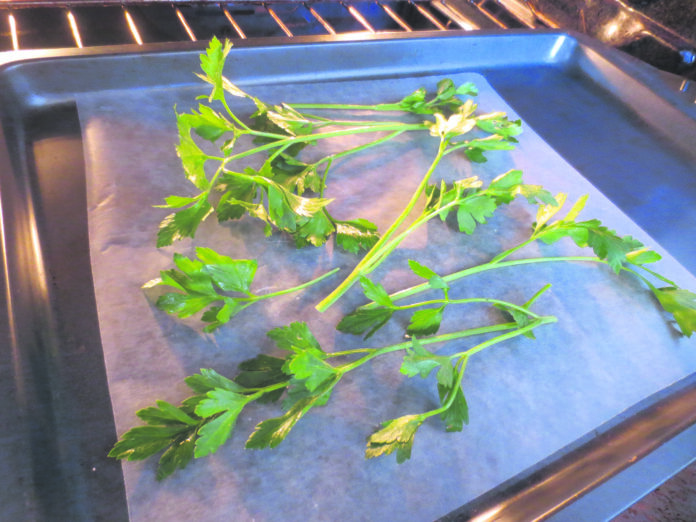by Mark and Ben Cullen
The herbs in your herb rack may be fraudulent.
“Food Fraud” happens when the food in the package is not what it says on the label. The UK Food Standards Agency estimates that roughly 10% of the food on supermarket shelves is adulterated and estimated costs to the global food system range from $10-50 billion per year. The Canadian Food Inspection Agency laid 52 charges for food fraud last year in Ontario alone.
A CBS report in the US found that half of the dried spices they had sent for analysis were proven to be adulterated in some way: corn added to turmeric, pepper added to nutmeg, and “unknown plant material” added to oregano.
Here in Canada, researchers the University of Guelph are working on a DNA-based approach to improve regulatory processes and make it easier to combat food fraud and help our country maintain our reputation for food integrity. With obvious risks to public health, the environment, and consumer confidence there is a lot of motivation to get to the root of the issue.
Many commonly used herbs are very simple to grow, and even tastier than the best product available at the stores. We recommend that you try growing some for yourself. Here are some of the best to start indoors now:
Oregano is easy to grow and easy to fake. Many different dried leaves can be crushed to look like oregano. Growing oregano is about as easy as putting the seed in well-drained soil and adding water. As a perennial crop, you can expect it to come back year after year, and it will spread. It is so aggressive that some gardeners prefer to grow it in a container, where it can be more easily controlled. Container grown oregano demands at least a 30 cm pot (12-inches) diameter as the plants like space. Oregano can be frozen or dried for year-round use.
- Preserving. The best way to freeze oregano is to wash and chop it into pieces about the size of a dime. Spread out on a few paper towels and allow to dry then put it into ice cube trays and add enough water to cover the contents, then freeze. The cubes can be transferred to a bag and kept for up to six months. Parsley can also be frozen this way.
- To dry oregano, arrange the cuttings on a cookie sheet lined with parchment paper. Put the sheet in the oven for 1 to 4 hours around 150 degrees F, with the oven door cracked open. Drying times vary, so watch closely. Store in an airtight container, and crush when you’re ready to use. Parsley, thyme, rosemary, sage, dill, and mint all lend themselves to this method of drying as well.
Garlic: if you don’t have it in the ground already, put it on your list to plant next fall. Plant your garlic cloves “pointy side up” in a well composted soil, and cover with mulch, such as straw. You can harvest the scapes (the pig-tale shaped flower buds) in July, and by mid-August you will have fully developed garlic bulbs for harvest. The bulbs store well on their own, but if you like garlic-powder, peel the garlic, cut them into thin slices and dry them in a pan in the oven at 150 degrees F, turning often. Once dried, grind in a mortar and pestle or blender and sift to separate the powder from the chunks. Both the powder and the chunks are flavourful and can be stored in airtight containers.
Paprika powder is made from bell or mild chili peppers that are dried and ground. You might have to search to find a Hungarian or Spanish pepper with an amount of heat that is agreeable to you but look for a thin-walled variety that can be easily ground. Seed catalogues provide this kind of information. Start the seeds indoors 8 weeks before planting time, so they are ready for transplant two weeks after last frost. Space the plants 12 inches apart in 3 foot rows, and choose an area with maximum sun and heat. They should be ready to harvest 85 days from transplant.
The easiest way to dry peppers is in a dehydrator, as they contain a lot of moisture. They can take up to a year to dry by hanging in a dry, well ventilated room. A coffee grinder or mortar and pestle will allow you to crush the dried peppers into paprika which will last for up to a year.
When you grow your own you can cook with a pinch of confidence, and a dash of your favourite flavours.


